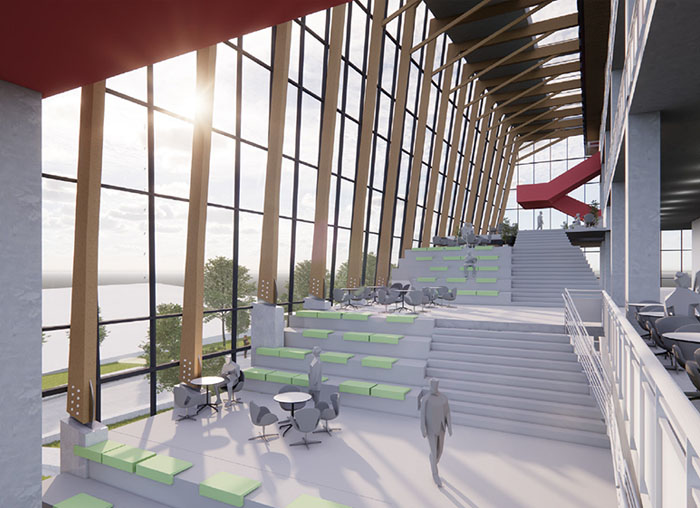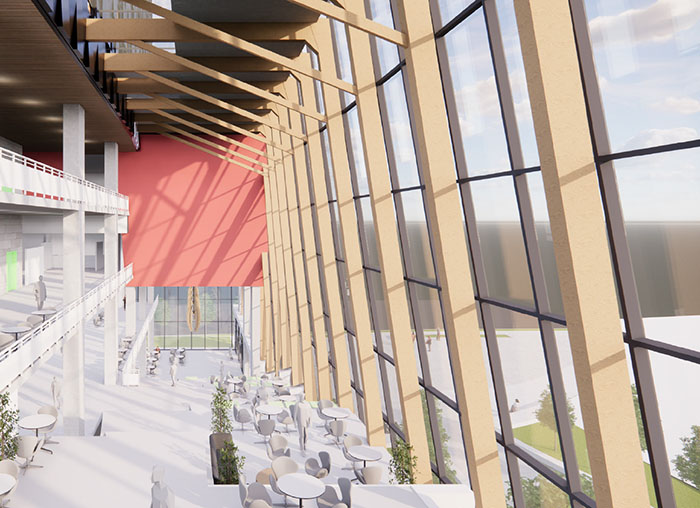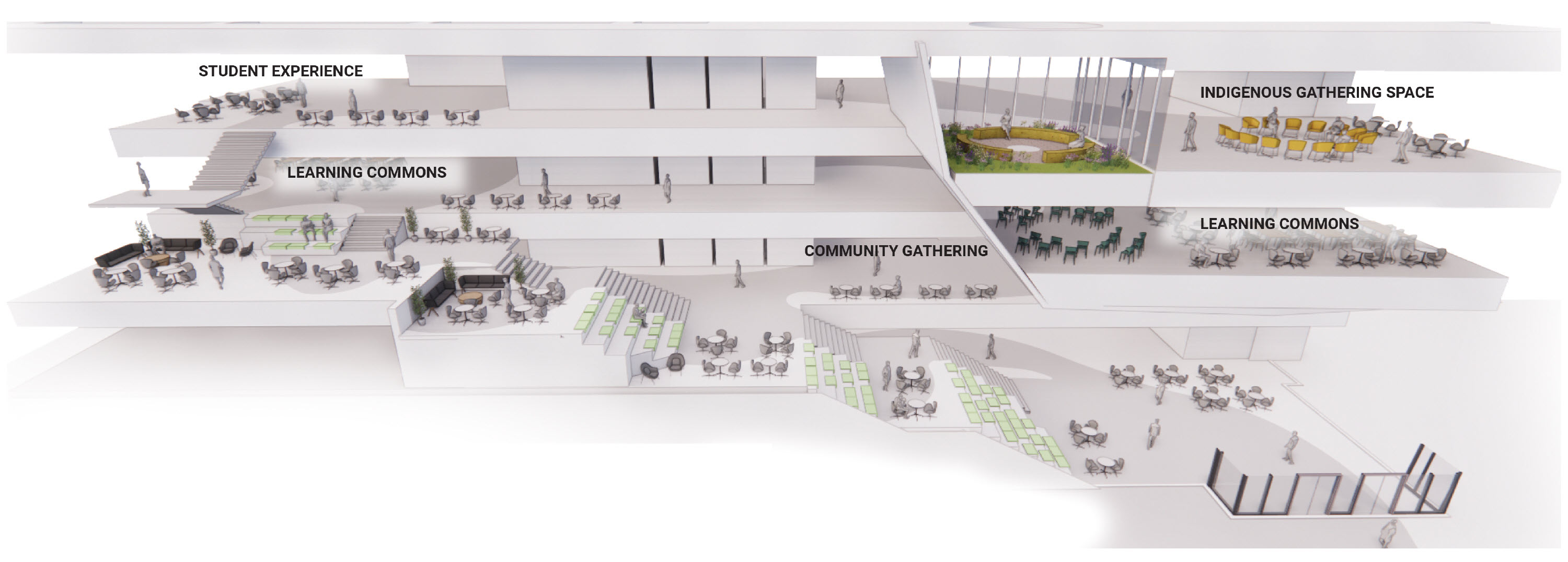Campus Plan
VCC Campus Plan

Artistic rendering of the VCC Centre for Clean Energy and Automotive Innovation (CCEAI).
The Campus Plan guides VCC’s long-term development of its two urban campuses. The Centre for Clean Energy and Automotive Innovation (CCEAI) at the Broadway campus is fundamental to this objective and is a catalyst project for the VCC Campus Plan.
Design influences
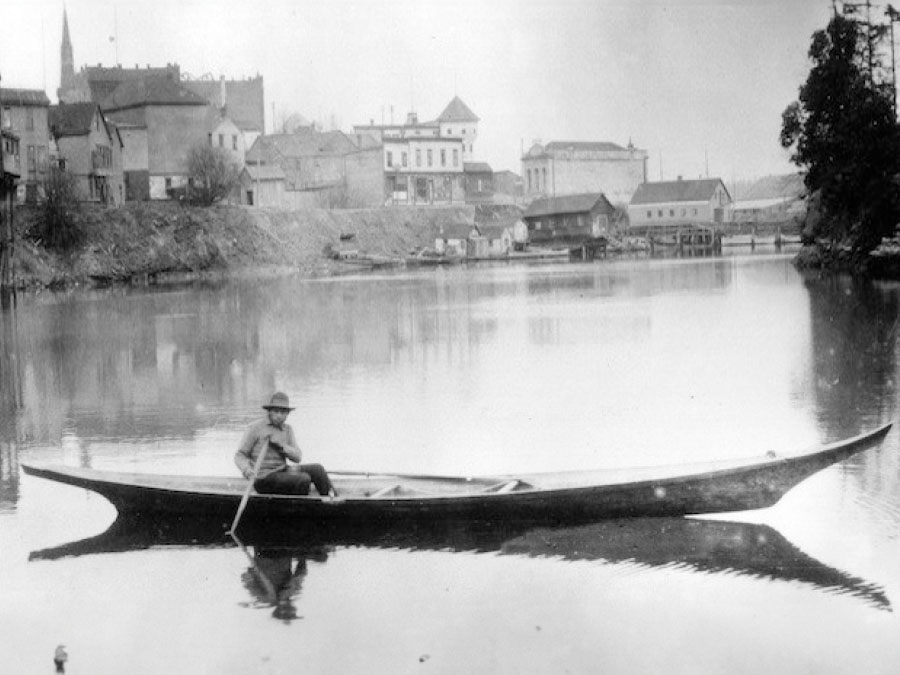
The proposed design of the CCEAI was both informed and inspired by the pre-settlement history of the VCC site, specifically the China Creek estuary; the stories shared with the integrated project team by Musqueam, Squamish, and Tsleil-Waututh Nations knowledge keepers.
But it was the significance of the canoe, its relationship with both the land and water, the craft involved in the making of the canoe, and its metaphor for community — as everyone must work together, paddling or pulling as a single entity — that resonated most with all VCC stakeholders. This led to the exploration of design and massing opportunities that conveyed the idea of a traditional Coast Salish canoe as the design of the CCEAI building.
CCEAI
The Centre for Clean Energy and Automotive Innovation (CCEAI) is envisioned as an eight-story, 31,943 square meter (343,832 square feet), LEED Gold certified, energy efficient, hybrid mass-timber/concrete building. Two underground levels complete the structure, P1 being partially allocated to the academic program and building support, P2 solely for parking.
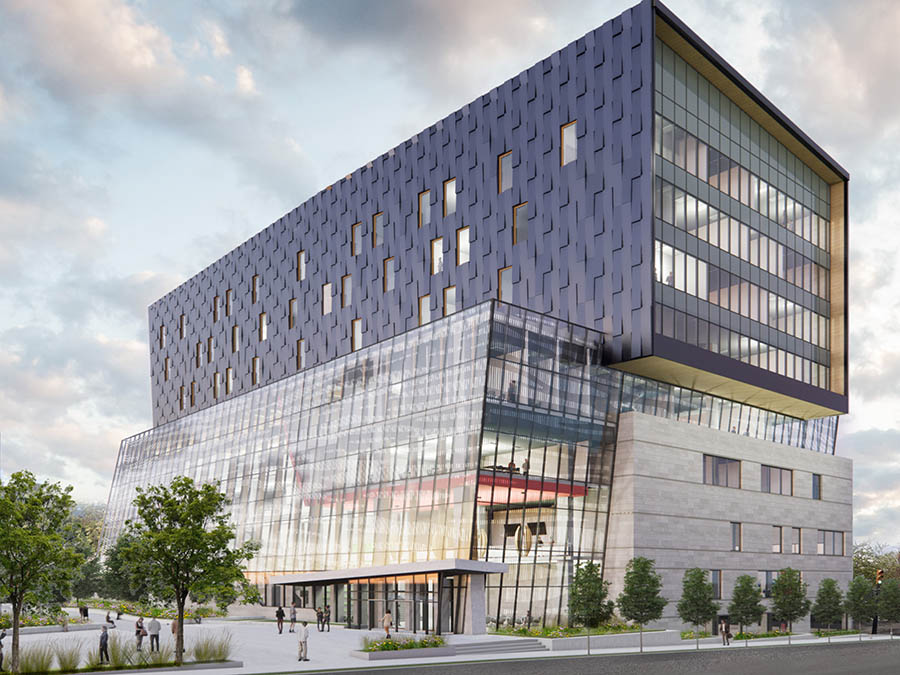
Rendered image of the Centre for Clean Energy and Automotive Innovation (CCEAI) building.
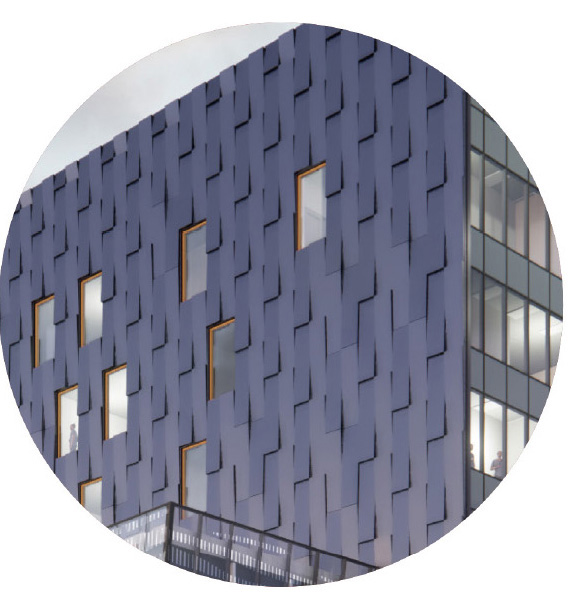
Canoe
Metal panel, dark in colour to mimic traditional Coast Salish canoes. Angled panels represent a canoe on its journey to completion in the prosess of being carved . Wood details on inside to minimize maintenance and further elude to the Coast Salish canoe narrative.
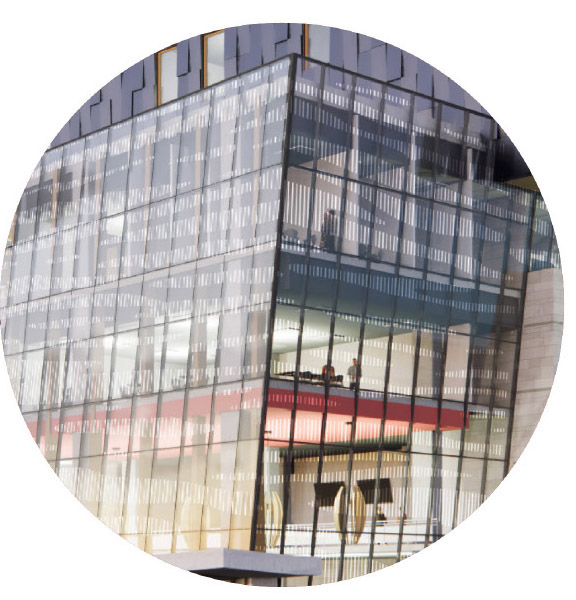
Water
The atrium is primarily composed of glass for a high degree of publicness and transparency. A slight movement is present on the glazing eluding to the wake of the canoes as it moves through the water. A frit pattern eluding to the water is applied to the glazing in alignment with bird-friendly principles.
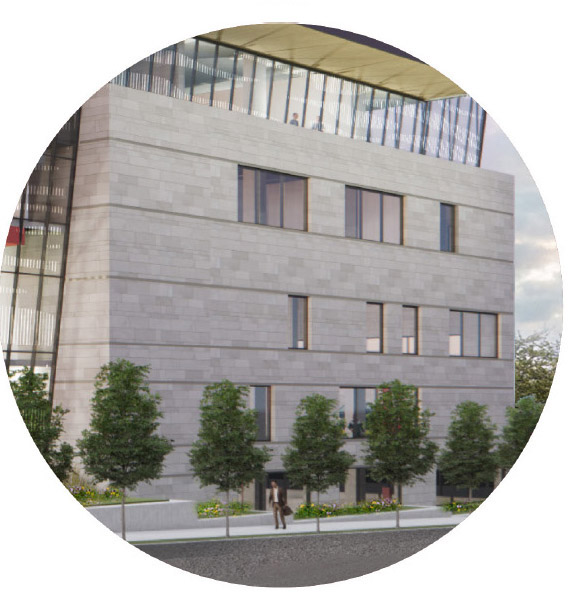
Land
A solid cladding with earth-tone colours patterned to represent land. Windows are placed in accordance with interior program requirements.
CCEAI: Project scope and planned space usage
The CCEAI is anchored by new automotive programs that will train automotive service technicians on the servicing and maintenance of electric vehicles – Battery Electric Vehicles (BEV), Plug-In Hybrid Electric Vehicles (PHEV) and Hybrid Electric Vehicles (HEV). The CCEAI will contribute 772 net new students annually with the demand for 24,000+ jobs through to 2031, especially in the mainland southwest which represents ~70% of the projected workforce.
Programs related to clean energy technology (solar, wind, biofuels, geothermal, etc.) will have specialized, flexible lab space on Level 5. The facility will also house VCC’s design and making programs. CAD/BIM, Digital Media, Fashion and Jewellery are co-located on the top two levels to facilitate sharing of critique spaces, printing, labs and makerspace; to foster a dynamic collaborative environment and support interdisciplinary exchange.
Most of the building’s classrooms will be located on levels 2, 5 and 6 creating a physical intersection for students and faculty of the various programs to come together for social exchange, sparking opportunities for interdisciplinary collaboration to enhance the student experience and engagement. Rounding out the building space program are Student Experience Services, Library, Learning Centre and Learning Commons, Community Commons, Indigenous Gathering Space, and Faculty Administration.
